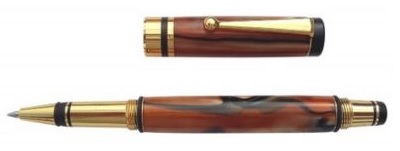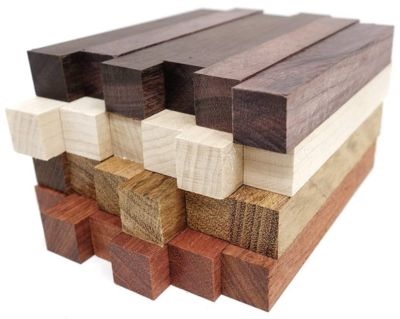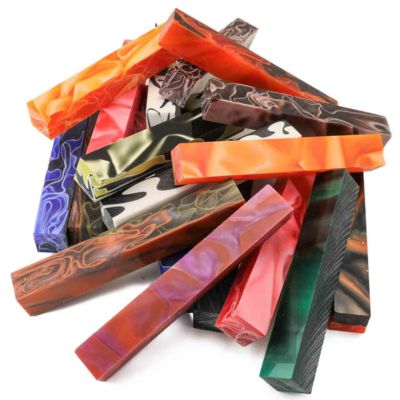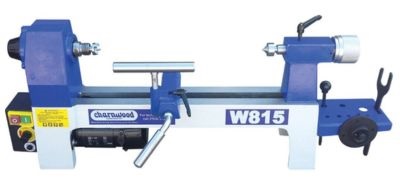✔ Competitive Pricing ✔ Quality Service ✔ Extensive Stock ✔ Experienced Staff
Pen Turning - A Beginners Guide
A Beginners Guide to Pen Turning
Starting Out Pen Turning
Turning pens is a very rewarding and enjoyable pastime. Whether you are a seasoned woodturner or a newbie, pen turning is a quick and easy skill that requires a minimum of turning equipment. There are many different styles available, from the standard ballpoints, rollerballs and fountain pens as well as propelling and click pencils.You will also discover a wide variety of plating finishes, from 24k gold plating right through to Rhodium plating that will last a lifetime. There is also an almost endless choice of man made acrylics and resin blanks.
Pen Blank Selection
Tools and Equipment
Lathes
It is recommended that you turn using a lathe speed of 2500rpm or faster to ensure a clean cut on such a small surface area. Most wood turning lathes have this capability. Small, more compact lathes are more suitable for pen turning, however pens can be turned on any size of lathe.
Drills
When drilling, remember to keep the drill moving and clear any shavings away to reduce heat build up, as this will damage the wood and cause splitting. Pen blanks can be drilled either in the lathe using a chuck in the headstock and a standard drill chuck in the tailstock, or held vertically in a vice/clamp and drilled using a pillar/banch drill.
Pen Mandrels
Pen mandrels are a very helpful piece of equipment when turning pens as they ensure the pen runs accurately in the lathe. A pen mandrel is a steel bar machined accurately and is held in the lathe using a chuck, or more commonly using a drill driver, although many mandrels already have a drill driver as an integral part. We recommend you purchase a double pen mandrel, which is long enough to accomodate both parts of the pen. This allows for more accurate turning and consistancy in wall thickness, eliminating any problems that may occur when building the pen. Due to the different tube sizes of the many various pens available, there are matching bushing sets to slide over the mandrel and fit accurately into the ends of both tubes to ensure they turn concentrically. When the tubes and bushes are in place the tailstock is bought up into place and holds everything securely, ready to be turned.
Drill Drivers
A drill driver is used to securely hold the mandrel in place and to drive the mandrel via the lathe spindle. They are available in 1 or 2MT depending on the bore of the headstock spindle in your lathe. One end of the pen mandrel fits tightly into the drill driver and the other normally has a small cup end into which a standard revolving centre fits.
Glues and Adhesives
It is important to select the correct glue when making pens. Cyanoacylate or super glue ensures a strong bond, but is expensive and inflexible, with a quick setting time and little time for adjustment. Polyurethane adhesive is more cost effective, very flexible with a longer setting time, and can also be used as a gap filler if required.
Abrasives
When using abrasives on turned pens, keep the abrasive moving at all times and ensure the wood does not get hot. If the wood becomes hot damage will occur such as splitting and cracking.
Finishes
Waxes can be used to give a high shine but due to a pen being handled so much, a wax finish will not last very long, and also collects dust and dirt over time. Friction polish is more durable and gives a high gloss finish, and is easy to apply while the pen is still on the lathe.
Health and Safety
As with all woodworking it is essential that a dust mask and safety goggles be worn due to the hazards of wood dust and shavings. Also ensure that glue is used in a well-ventilated area and has set prior to switching the lathe back on, so as not to flick glue into your face.
Take a look here for everything you need to start turning pens.
Have fun creating beautiful pens!





 01726 828 388
01726 828 388












